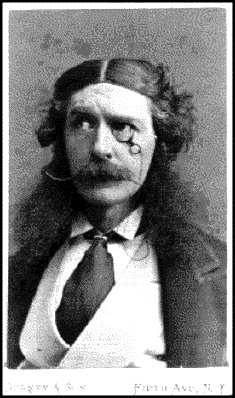Stories from the
Talk of the Town
Edited by Lillian Ross
(Modern Library)

Of course, there were times when the subjects could scarcely be separated from the ads. I read a brief report that came out in 1959 about two ladies who were bottling beans and pickling spice --- "Dilly Beans," they were called --- and selling them door-to-door. I had the misfortune to meet one of them, and, based on the plug in The New Yorker --- The New Yorker! --- I was relieved of a $1000 which was to be returned to me fifty-fold when their product took off. I'm still waiting.
Fortunately, in The Fun of It, Ms. Ross has acres of material to work with, and she has chosen carefully --- weeding out the tendentiously tedious. The early ones are perhaps more interesting, because we get to read about the famous or about-to- The need to be light and frothy, however, can be depressing. There was "that long-winded lady we hear from occasionally" who was, indeed, long-winded --- a sexist bit of caricature which the magazine would never indulge in today, no more than they would report Marian Anderson making "her first concert appearance when she was six years old with another picaninny." (We must praise the editor for not censoring these jarring touches of the past). In its earliest incarnation, The New Yorker was not about to be mixing it up on matters of race or social turmoil or economic injustice. In the worst of the depression, "The Talk of the Town" was not interviewing the Reuther brothers or Ammond Hennacy or radical Quakers or Communists or "American Firsters" --- people who were trying valiantly (sometimes violently) to change the system. The ones who appear on these pages were either politicos --- Al Smith, Fiorello LaGuardia, Eleanor Roosevelt, Clare Booth Luce --- or tycoons: David Rockefeller, Walter Chrysler and "the late August Belmont." Of the many shorts reproduced here --- and there are almost two hundred of them --- a couple of things stay with one. Then, as now, The New Yorker was curious, alive, on top of things, and wonderfully written. The list of people they interviewed were those who were moving and shaking things (certainly, Sally Rand, as described by A. J. Liebling and Harold Ross, was doing so, with her "bubble dance.") And who would ever guess, back in 1931, that the Jenkins Television Corporation would be at the forefront of the revolution that would change our lives so profoundly ("The set, as you may know, is like a radio cabinet, dials and all, except that in place of a sound-emitter it has a lens the size of a pie pan.") But, alas, it is the trivialization that makes us grit our teeth. The uproar caused by Diego Rivera at the Rockefeller Center is never discussed in the article about him (that came at the completion of the mural --- but there were hints of conflicts early on). Neither Faulkner's drinking nor his radical writing style is discussed: the latter is passed over rather lightly ("violent novels about the darker reaches of the soul"). The play "Pins and Needles" appears --- but with no discussion of the fact that it was an historical coming together of the rank and file of the ILGWU --- the Garment Workers' Union --- creating proletarian drama. (The very mention of the name of the play still brings tears to the eyes of the old New York radicals of the day.) Most of all, an article by Andy Logan called "Last Word" that one gets a sense of the perniciousness of the style and focus of "The Talk of the Town." It's a 750 word article on Adolf Hitler. If we are looking for a parody of the parody, this may be it --- albeit, a dark one: He was fond of cactus for interior decoration and...he never had a checkbook in his life. He had his famous forelock cut off when he got a letter from a barber in Athens who said it was unbecoming, meat for cartoonists, and an evidence of poor barbering. Mussolini told a confidant, "Hitler is just a bad imitation of me..." Of his library of six thousand volumes, the only one he ever gave any evidence of having read was Houston Stewart Chamberlin's "Foundation of the Nineteenth Century." He used to say he could get the gist of a book by running his hands over it. One piece of Hitler art that was extant in Germany as recently as ten years ago was a poster he painted in 1909 for the manufacturers of Teddy's Perspiration Powder: he did this after twice flunking his entrance tests to the Vienna Academy of Art. He had a dozen pairs of spectacles at each of his desks, various pairs for various hours of the day and night. In 1927, he prophesied that Berlin would be completely rebuilt within twenty years.